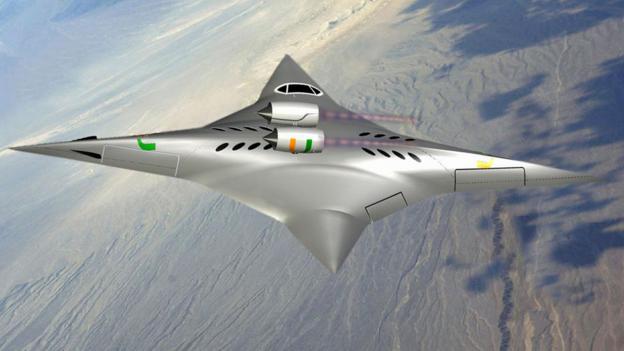
Credit: University of Miami/ BBC
http://www.bbc.com/future/story/20121106-radical-planes-take-shape / NASA skies aeroplane airplane airliners two wings cigar-shaped cigar shaped cylindrical fuselage trio of vertical and horizontal stabilizers tail elevator your design travel through air several hundred miles an hour packed with people conservative view change rising fuel prices increasingly stringent pollution limits surge in demand for air travel plane designers going back to the drawing boards radical new shapes engine technologies are beginning to emerge promising the biggest air travel since de Haviland first commercial jet airliner 1952 Rich Wahls aerodynamicist at Nasa’s Langley Research Center in Hampton, Virginia New model airliners evolving under the skin much more technology in there now earlier improvements went mostly unnoticed focused building better quieter turbine engines higher performance improved fuel consumption computer controls fly-by-wire systems difference pilot passengers recent years biggest development strong lightweight plastics composite materials rather than metals reducing reduction weight fuel burn allowed development radical new planes giant Airbus A380 Boeing 787 Dreamliner advances aviation engineers fuel prices soared in recent years. modern planes 60% to 70% more efficient aviation fuel expenditures account quarter airline operating expenses par with labor costs global airline travel grow to 3.3 billion annually engineers boost performance shock test rethink airplane Nasa’s Subsonic Fixed-Wing program collaboration US aerospace agency industrial partners Boeing GE general electric Lockheed Martin Northrop Grumman Pratt & Whitney academic institutions MIT Massachusetts Institute of Technology develop technologies 60 to 70% improvement fuel efficiency project new designs 71-decibel decrease noise emissions reduction reduce four-fifths nitrogen oxide pollutants current standards goals technology enter service industry commercial aircraft life spans /
No comments:
Post a Comment